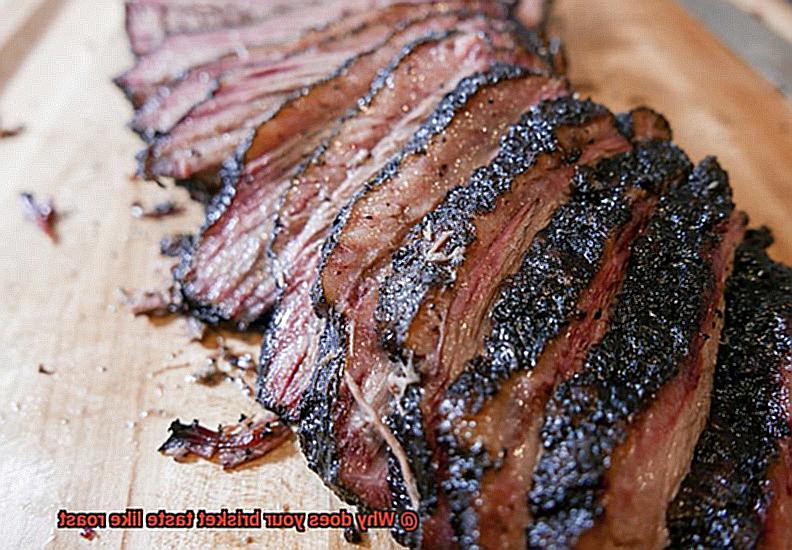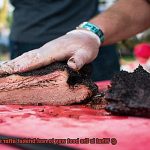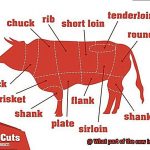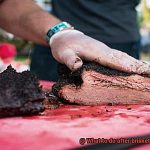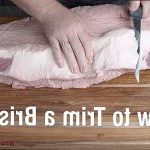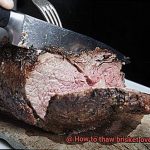Have you ever spent hours perfecting your brisket recipe, only to be disappointed when it tastes more like a roast than a tender, smoky brisket?
It’s frustrating, and many backyard pitmasters are left scratching their heads wondering what went wrong. But don’t throw in the towel just yet because we’ve got you covered.
In this article, we’ll explore the underlying reasons why your brisket may be tasting like a roast. First things first, let’s talk about the differences between a brisket and a roast.
A brisket is a tough, fibrous cut of meat that requires low and slow cooking to break down its connective tissues and render it tender. On the other hand, a roast is a more tender cut of meat that can handle higher temperatures and shorter cook times.
So why does your brisket taste like a roast? It all boils down to the cooking method and temperature.
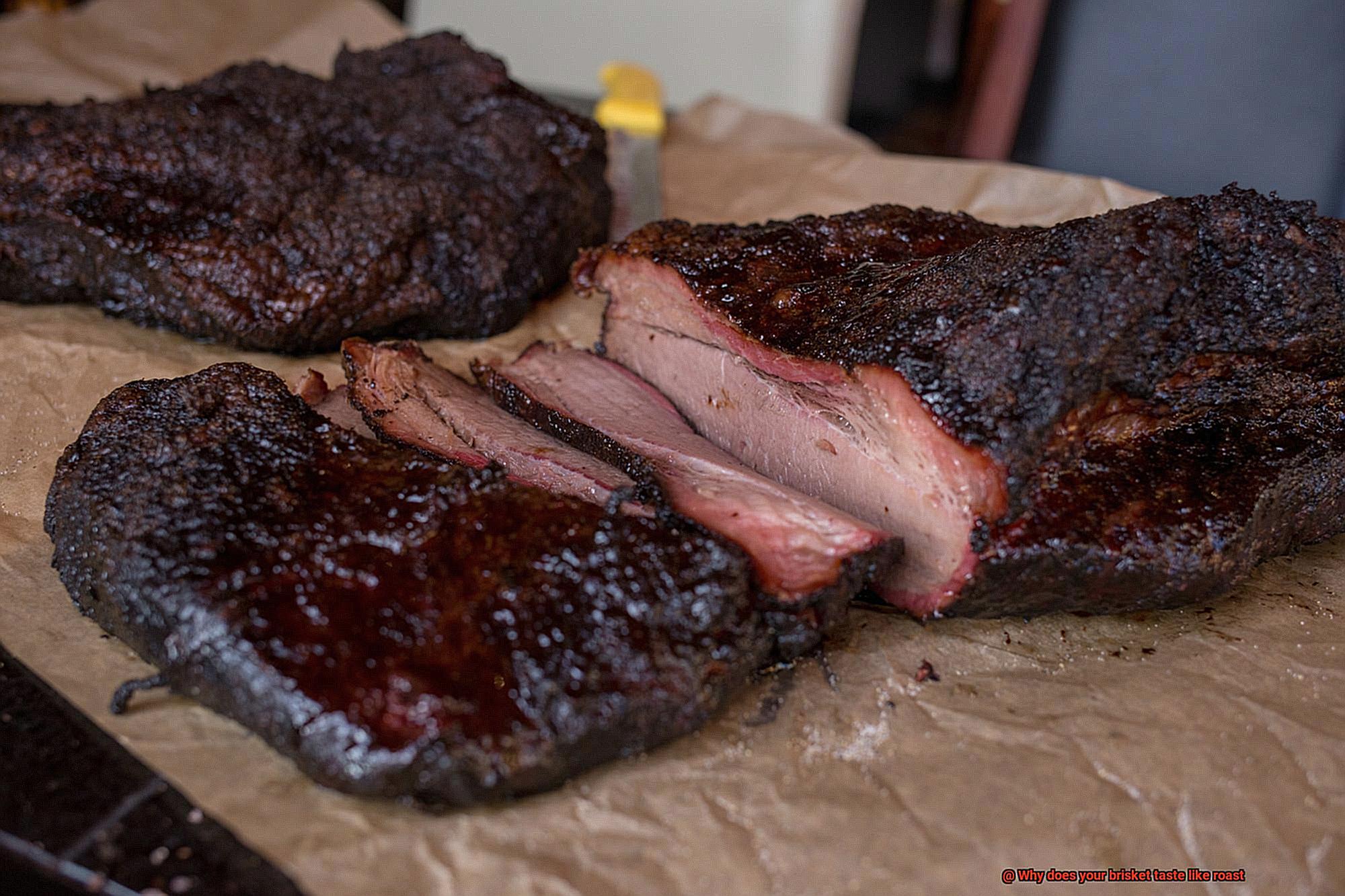
One common mistake is cooking the brisket at too high of a temperature. This can cause the meat to cook too quickly, resulting in a dry, stringy texture that resembles a roast.
Another factor is not allowing the brisket to rest properly after cooking which can also contribute to a roast-like taste and texture. But fear not.
Keep reading as we dive deeper into why your brisket may be tasting like a roast and how to fix it so you can impress your friends and family with your mouth-watering barbecue skills.
Contents
Overcooking Brisket
If you’re a brisket enthusiast, you know the feeling of sinking your teeth into a dry and tough piece of meat that tastes nothing like the tender, juicy brisket you were hoping for.
This culinary tragedy is often caused by overcooking your brisket – one of the most common mistakes people make when preparing this cut of beef. Brisket is a tough cut of meat that requires low and slow cooking to break down the connective tissue and make it tender.
However, if it’s cooked for too long, the meat can become dry and tough, losing its flavor and texture. Imagine chewing on a piece of gum for too long – it loses its elasticity and becomes difficult to swallow.
To avoid this tragedy, it’s essential to cook your brisket at the right temperature for the proper amount of time. The ideal temperature range for cooking brisket is between 225°F and 250°F.
Cooking your brisket at this temperature will allow the collagen to break down slowly, dissolving into gelatin, making the meat tender and juicy. On the other hand, if the temperature is too high, you’ll end up with a dry and tough texture that lacks flavor.
It’s like trying to run a marathon without training – you’ll burn out too quickly and won’t be able to finish strong. Another common mistake is not giving your brisket enough time to rest after cooking.
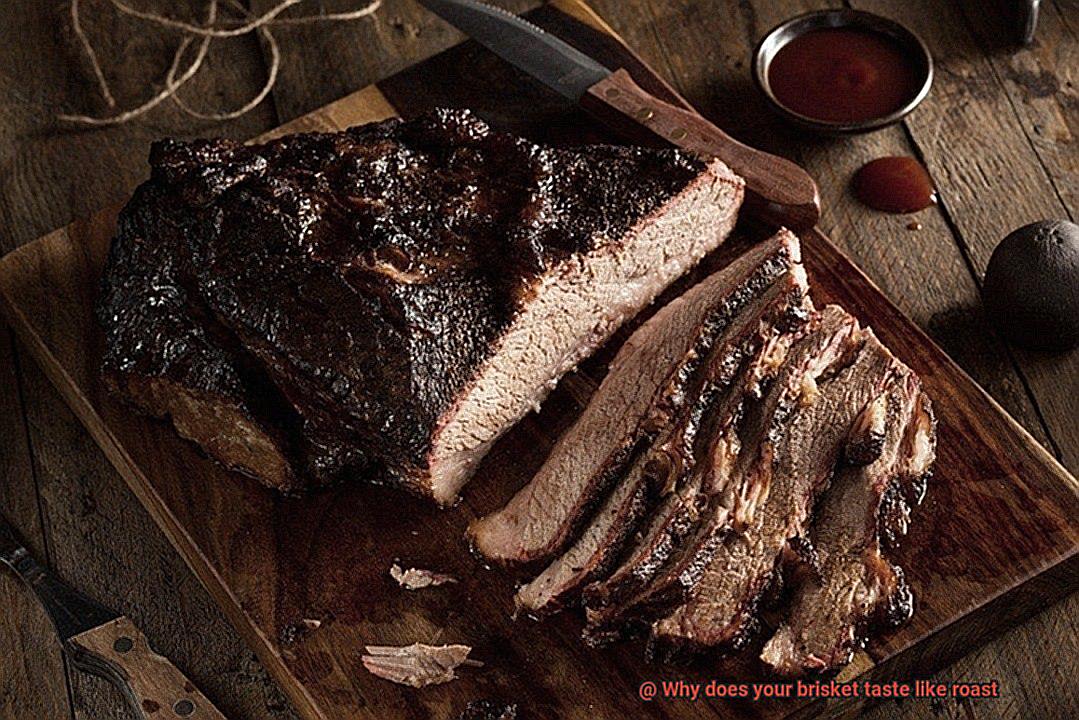
Resting allows the juices to redistribute throughout the meat, making it more flavorful and tender. If you cut into your brisket too soon, the juices will escape, leaving you with a dry and flavorless piece of meat.
To avoid overcooking your brisket, use a meat thermometer to monitor its internal temperature. The ideal temperature range for brisket is between 195°F and 205°F.
Once it reaches this temperature, remove it from the heat source and let it rest for at least 30 minutes before slicing. It’s like taking a break after running a marathon – it allows your body to recover and come back stronger.
Lastly, keep in mind that the quality of your meat can also impact how your final product tastes. Choose a high-quality brisket that has been raised and processed properly.
Poor quality meat may lack flavor and can result in a roast-like taste even with proper cooking techniques.
Improper Seasoning
Have you ever bitten into a brisket that tasted more like roast? Improper seasoning is often the culprit.
Seasoning is like the fairy dust that transforms your brisket into a delicious masterpiece. It plays a crucial role in enhancing the taste of the meat and masking any unwanted flavors.
However, be careful not to sprinkle too little or too much seasoning, as it can significantly affect the taste of your brisket. When seasoning your brisket, it’s essential to ensure that the rub penetrates deep into the meat.
Think of it as a warm hug that wraps around every inch of your brisket, infusing it with flavor and love. This even distribution of flavor will take your brisket from good to great.
Not all spices and herbs are created equal when it comes to seasoning your brisket. You must use high-quality ingredients that complement the flavor of the meat.
Think of it as finding the perfect dance partner – they bring out the best in each other. One common mistake when seasoning a brisket is not giving enough time for the rub to penetrate into the meat.
Patience is key here, folks. It’s recommended to season your brisket at least 12 hours before cooking to allow for maximum flavor absorption.
This process also helps tenderize the meat and enhance its overall texture. Lastly, be cautious when using pre-made rubs that contain excessive amounts of salt or sugar.
These ingredients can overpower the natural flavor of your brisket and leave you with a roast-like taste. Remember to read labels carefully and choose rubs with a balanced blend of spices and herbs.
Avoid common mistakes such as using too little or too much seasoning, not allowing enough time for the rub to penetrate, and using pre-made rubs with excessive amounts of salt or sugar.
Cooking Temperature
As any brisket enthusiast knows, cooking temperature is a critical aspect of preparing the perfect brisket. It can make or break the taste and texture of your dish.
To ensure that your brisket turns out tender, flavorful, and juicy every time, let’s dive into the details. First and foremost, the ideal temperature range for cooking brisket is between 225-250°F.
This range has been tried and tested by experts, and it’s known to give you the best results. But maintaining this temperature consistently throughout the cooking process is just as crucial.
Picture this – too high a temperature, and your brisket will dry out and become tough like a cardboard box. Too low, and it’ll take longer to cook, resulting in a roast-like taste and texture.
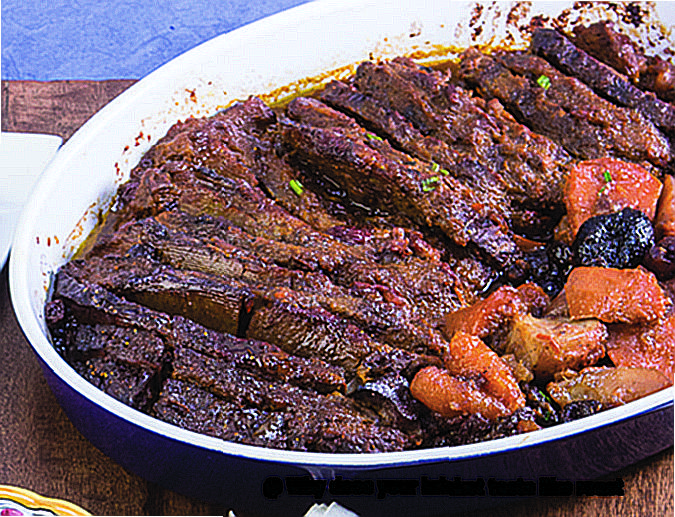
To avoid these culinary disasters, we suggest using a meat thermometer to monitor the internal temperature of the meat and adjust the cooking temperature accordingly. But wait, there’s more.
The size of your brisket also plays a vital role in determining the right cooking temperature. A larger brisket requires a lower cooking temperature to ensure that it cooks evenly and doesn’t dry out.
It’s like conducting an orchestra – every instrument must play its part correctly to create beautiful music. In summary, cooking at the right temperature is crucial to ensure that your brisket turns out perfectly cooked, tender, and flavorful every time.
Quality of Meat
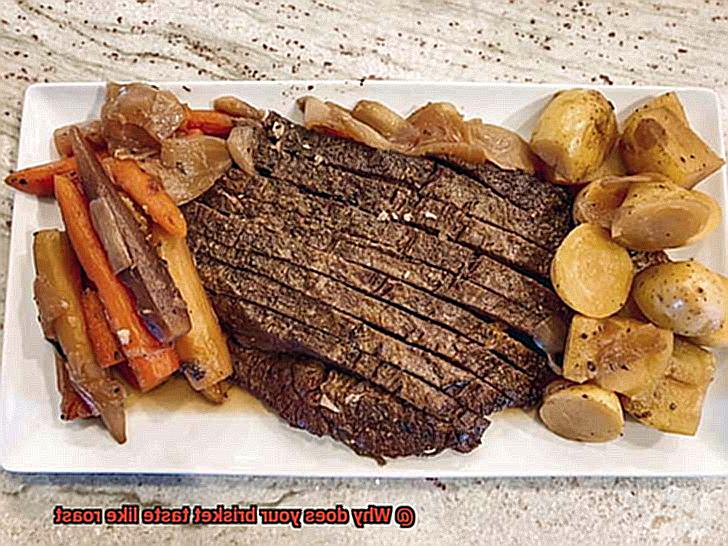
Without high-quality meat, your brisket may end up with a disappointing roast-like taste.
So, what makes meat high-quality? When it comes to beef, the USDA has eight different grades ranging from prime to cull.
Prime beef is the top-quality grade and comes from young, well-fed cattle with abundant marbling. This marbling is what gives the beef its tenderness, juiciness, and flavor.
On the other hand, cull beef is the lowest quality and comes from older cows that have been culled from the herd. It’s tough and not very flavorful.
To ensure your brisket has that mouth-watering taste and texture, look for meat labeled as USDA prime or choice. These cuts will have just the right amount of marbling to make your brisket juicy and tender.
But great meat alone won’t guarantee a perfect brisket. Proper preparation and cooking are also vital to achieving that delicious end result.
Before cooking, season your brisket with a dry rub or marinade, letting it rest at room temperature for at least an hour. Then slow smoke it over wood or charcoal until it reaches an internal temperature of around 200°F.
This will break down the connective tissue and make it tender. In summary, choosing high-quality meat is just as important as proper preparation and cooking when it comes to making a lip-smacking brisket.
Tips for Perfect Brisket Taste
Here are some tips to achieve the perfect brisket taste that won’t leave you with a roast-like result.
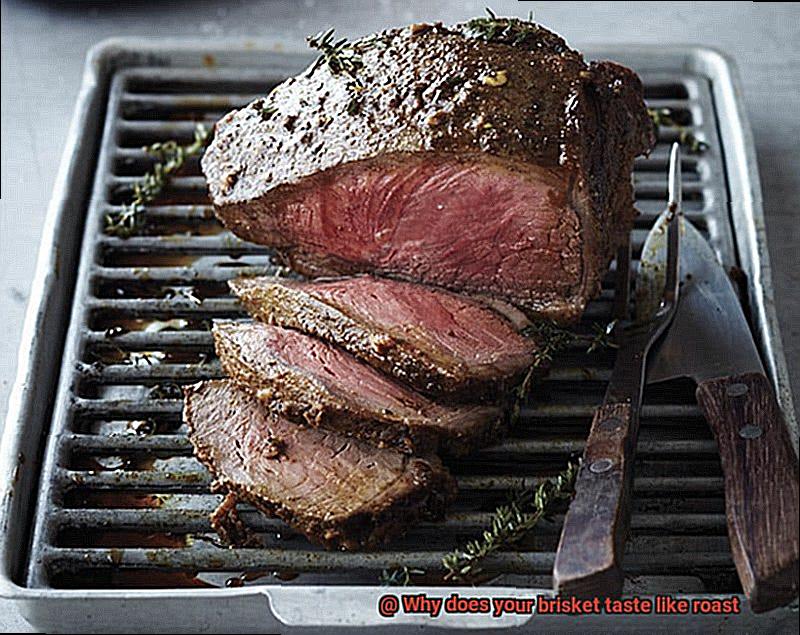
Choose the right cut of meat
A good brisket has plenty of marbling and at least ¼ inch of fat on one side, which helps keep the meat juicy during cooking. Without enough fat, your brisket may turn out dry and tough.
Seasoning
A well-seasoned brisket is a must for delicious taste. Don’t be afraid to experiment with different seasoning blends, but remember to use spices that will complement the natural flavors of the meat instead of overpowering them. A simple salt and pepper rub is always a good place to start, but you can also add garlic powder, onion powder, smoked paprika, cumin, or other herbs and spices that you love.
Smoking
Smoking is a crucial step in achieving the perfect brisket taste. Use wood chips or chunks such as hickory, mesquite, or oak to add smoky flavor. Keep the temperature between 225-250 degrees Fahrenheit and smoke for about 1 hour per pound of meat. This slow cooking process will help tenderize your brisket while infusing it with a distinct smoky flavor.
Wrapping
After several hours of smoking, your brisket can become dry and tough. To prevent this from happening, wrap the brisket in foil or butcher paper halfway through cooking (known as the “Texas Crutch”). This will help retain moisture and create a more tender texture.
Resting
Resting your brisket after cooking is an essential final step to achieving the perfect taste. Let it rest for at least 30 minutes before slicing to allow the juices to redistribute throughout the meat. This results in a more flavorful and tender end product.
Now that you have these tips in mind, it’s time to get cooking. Remember, practice makes perfect when it comes to brisket, so don’t be afraid to experiment with different seasoning blends and smoking woods until you find your perfect combination. With patience and attention to detail, you can achieve a mouth-watering brisket that will leave your guests begging for more.
8Er9Hdnd50Q” >
Conclusion
In conclusion, the quest for a perfect brisket taste can be daunting for any pitmaster.
However, understanding the reasons behind your brisket’s roast-like flavor can help you tweak your cooking technique and achieve scrumptious results every time. Overcooking at high temperatures or neglecting proper resting times are common mistakes that lead to tough and dry meat.
Choosing high-quality meat, seasoning it well, and maintaining a consistent cooking temperature are also crucial factors that contribute to the final taste. Wrapping your brisket in foil or butcher paper halfway through cooking is an excellent way to retain moisture and create a more tender texture.
And don’t forget about resting. Allowing your brisket to rest after cooking ensures that the juices redistribute evenly throughout the meat, resulting in a succulent and flavorful end product.
With these tips in mind, you’ll be on your way to impressing your friends and family with a mouth-watering brisket.

